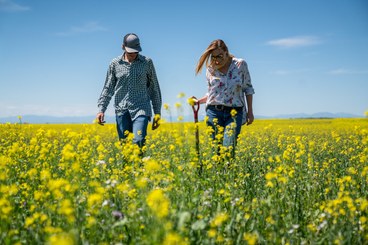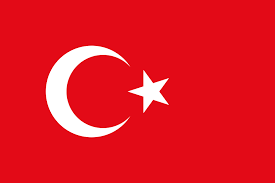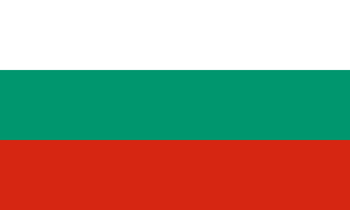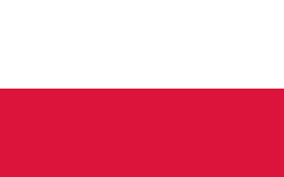
SCOOP – Developing Intercropping System with camelina to increase the yield and quality parameters of local underutilized crops

In the North-East of Italy, trials in organic farms have verified the technical path of intercropping camelina and chickpeas or lentils, also evaluating the potential for establishing a supply chain that would make the practice economically sustainable. The trials highlighted the potential of the intercropping technique in controlling weeds and facilitating the growth of legumes, which benefit from the tutoring effect of a crop such as camelina. The result was particularly significant in 2023 and 204, years with high rainfall that made it difficult or impossible to intervene with mechanical means to control weeds in pure crops. Furthermore, the high rainfall led to lodging, with consequent difficulties in harvesting, in pure legumes, while the presence of camelina supported the vegetal mass of the legumes and allowed them to be harvested normally. The creation of a dedicated Living Lab has allowed the exchange between producers, advisers, researchers and the actors of the supply chain that represent storage, first handling, processing and the marketing of all the products obtained. For grain legumes the management of the supply chain is relatively simple, while the use of camelina, in the form of oil and cake, is made complex both by the fact that it is an unknown product, and by the need for dedicated plants, possibly small-size.
---
Nel Nord-Est italiano le prove in aziende biologiche hanno verificato il percorso tecnico di consociazione tra camelina e cece o lenticchia, valutando anche le potenzialità di costituzione di una filiera che rendesse economicamente sostenibile la pratica. Le prove hanno messo in evidenza le potenzialità della tecnica di consociazione nel controllo delle malerbe e nel facilitare la crescita delle leguminose, che beneficiano dell’effetto tutore di una coltura come la camelina. Il risultato è stato di particolare rilievo nel 2023 e 204, annate ad alta piovosità che ha reso difficile o impossibile intervenire con mezzi meccanici per il controllo delle malerbe nelle colture in purezza. Inoltre, l’alta piovosità ha comportato l’allettamento, con conseguenti difficoltà di raccolta, nelle leguminose in purezza, mentre la presenza della camelina ha sorretto la massa vegetale delle leguminose e consentito di raccoglierle normalmente. La costituzione di un Living Lab dedicato ha permesso il confronto tra produttori, tecnici, ricercatori e gli attori della filiera che rappresentano lo stoccaggio, la prima lavorazione, la trasformazione e la commercializzazione di tutti i prodotti ottenuti. Per le leguminose da granella la gestione della filiera è relativamente semplice, mentre l’utilizzo della camelina, sotto forma di olio e panello, è resa complessa sia dal fatto che è un prodotto non conosciuto, che dalla necessità di impianti dedicati, possibilmente di piccole dimensioni.
Practice Abstract "SCOOP" system in Italy
[ .pdf 677Kb ]

The project, conducted within the scope of organic farming practices under the ecological conditions of the Central Anatolia Region, explored the effects of different sowing applications—including autumn and spring sowing, intercropping, and sole-cropping—on the quality parameters of camelina, fenugreek, coriander, and buckwheat. It also assessed their influence on soil biodiversity and their potential use as food and feed. Notably, this was the first trial of its kind established in the region. During the project, both a very rainy and an extremely cold and dry year were examined, which also contributed to assessing the sustainability of the system. Camelina, a relatively new crop for the region, demonstrated promise for integration into different seasonal combinations. Its capacity to help address the existing oil deficit, low soil requirements, high adaptability, strong competitiveness against weeds, and ability to leave behind a fertile field suggest its suitability for inclusion in alternative crop rotation systems. This presents an encouraging prospect for Central Anatolia, where conventional methods and monoculture practices have led to soil degradation. Fenugreek has proven to be an excellent companion crop, both due to its leguminous nature and its role as a well cover crop. Its harvest time closely aligned with camelina’s maturation, reinforcing their synergy as a combination. In scenarios where early spring rainfall was adequate, this pairing delivered impressive results, leaving behind productive soil for subsequent crops. The differing seed sizes and colors facilitated post-harvest seed separation using sieves or optical sorting machines (Sortex). When analyzing the nutritional values of all crop combinations, both fresh green fodder and post-harvest residues were found to have good feed quality.
--
Orta Anadolu Bölgesi ekolojik koşullarında organik tarım uygulamaları kapsamında ketencik ile çemen, kişniş ve karabuğdayın; yazlık kışlık, ara ekim-yalın ekim gibi farklı ekim uygulamalarının ürünlerin kalite parametreleri ve toprak biyoçeşeşitliliği üzerine etkileri ve gıda ve yem olarak değerlendirilme potansiyelleri araştırılan proje, bölgesinde bu kurguyla kurulmuş ilk deneme olmuştur. Proje süresince hem çok yağışlı hem de aşırı soğuk ve kurak bir yılın da değerlendirilmesi aslında kurgunun sürdürülebilir olarak değerlendirilmesi konusunda da yardımcı olmuştur. Bölge’de yeni bir bitki olan ketenciğin yazlık kışlık kombinasyonlarda yer alabilecek potansiyel bir bitki olması ve mevcut yağ açığının kapatılmasında yer alabilecek olması ve toprak istekleri yönüyle kanaatkar olup, adaptasyon kabiliyetinin yüksek olması, rekabetçi özelliği ile yabancı otları baskı altına alması ve kendinden sonra verimli bir tarla bırakması, alternatif ekim nöbeti sistemlerinde yer alabileceği kanaatini geliştirmiştir. Bu durum konvansiyonel metotların ve monokültür uygulamaların yoğun kullanıldığı ve toprak yapısını çoraklaştırdığı orta Anadolu Bölgesi için ümitvar görülmektedir. Çemen gerek baklagil olması gerekse iyi bir ön bitki olması yanında ketencikle yakın tarihlerde hasat olgunluğuna gelmesi iyi bir kombinasyon oluşturmalarını sağlamıştır. Kombinasyon bilhassa ilkbahar erken yağışlarının tatminkar olduğu durumlarda iyi sonuçlar vermiş, kendisinden sonra gelen bitkilere de verimli bir tarla bırakmıştır. Tohum iriliği ve renklerinin farklı olması hasat sonrası gerek elekle gerekse de sorteks’le tohum ayırma işlemini mümkün kılmıştır. Tüm kombinasyonların yem değerleri incelendiğinde gerek yeşil ot olarak gerekse de hasat sonrası artıkların yem değerlerinin iyi olduğu kaydedilmiştir.
Practice Abstract "SCOOP" system in Turkey
[ .pdf 725Kb ]

The project conducted field trials on organic farms in southern and northern Bulgaria to establish the feasibility of mixed camelina-pea crops to be incorporated into the practice of farmers and food chains in the country. Preliminary field trials on smaller plots showed that winter forage pea outperformed vetch as a companion crop for three camelina varieties and higher yields were realized. Legumes allow good yields to be achieved with less nitrogen fertilization (30kg/ha) and camelina keeps areas weed-free, especially at autumn sowing. The good cold tolerance of camelina allows it to be sown in autumn or spring. Sowing is two-phase because of the large difference in seed size, rolling after peas and camelina. The crop has good tolerance to weaker soils, but heavy waterlogged sites will be unfavorable for its development. It is drought tolerant, does not lodge or crumble. Ripening is simultaneous, but not to be delayed by harvesting, as it causes the peas pods to split and reduces the overall yield of the mixed crop. Productivity is higher in sole crops (1,1 - 1,35 t/ha), but intercropping gives a higher total amount of seed. Joint meetings of farmers, scientists, processors and consultants within Living Labs show interest in processing oil for food and cosmetics, but by-products have no market for now.
--
В рамките на проекта бяха проведени полски изпитвания в органични ферми в Южна и Северна България за установяване на възможността смесените посеви на камелина с грах да се включат в практиката на земеделците и хранителните вериги в страната. Предварителни полски опити на по-малки площи показаха, че зимният фуражен грах превъзхожда фий като съпътстваща култура за три сорта камелина и се реализират по-високи добиви. Бобовите култури позволяват с по-малко азотно торене (30кг а.в./ха) да се постигне добър добив, а камелината поддържа площите чисти от плевели, особено при есенна сеитба. Добрата студоустойчивост на камелината позволява тя да се засява през есента или напролет. Сеитбата е двуфазна заради голямата разлика в размера на семената, валиране след граха и камелината. Тя има добра поносимост към по-слаби почви, но тежки преовлажнени места ще са неблагоприятни за развитието й. Културата е сухоустойчива, не поляга и не се рони. Узряването е едновременно, но да не се закъснява с жътва, сепариране и почистване на семената. Закъсняването на жътвата води до разпукване на граха и намалява общият добив на смесения посев. Продуктивността е по-висока в чист посев (1,1 – 1,35 t/ha), но комбинирания дава по-голямо общо количество семена. Съвместните срещи на фермери, учени, преработватели и консултанти в рамките на Живи лаборатории показват интерес към преработка на масло за хранителни цели и козметика, но страничните продукти за сега нямат пазар.
Practice Abstract "SCOOP" system in Bulgaria
[ .pdf 692Kb ]

In Poland, between 2022 and 2024, both small- and large-scale field trials were conducted as part of the project, focusing on camelina and companion crops such as spelt, pea, flax, lentil, lupin, and oat. High temperatures and uneven precipitation distribution had a significant impact on crop development. In small-scale trials, camelina seed yields from sole cropping and intercropping systems ranged from 1.22 to 0.54 Mg/ha d.m., for sole camelina cropping and camelina intercropped with low-density spelt, respectively. The results also showed that companion crops in intercropping systems produced lower seed yields compared to their respective sole cropping. In large-scale trials, the seed yield of spelt in sole cropping reached 1.35 Mg/ha d.m., whereas camelina yielded only 0.50 Mg/ha d.m. Intercropping spelt with camelina resulted in an average 26% reduction in spelt seed yield compared to sole cropping. Similarly, camelina seed yield in intercropping was, on average, 52% lower than in sole cropping. The findings confirmed that the type of crop has a decisive influence on the diversity of beneficial insect fauna. No effect of camelina intercropping on pests of companion crops was observed. Intercropping also showed beneficial effects in reducing weed biomass and supporting greater biodiversity compared to sole cropping systems.
--
W Polsce, w latach 2022–2024, w ramach projektu prowadzono doświadczenia z uprawami współrzędnymi w małej i dużej skali, z lnianką oraz roślinami towarzyszącymi (orkisz, groch, len, soczewica, łubin i owies). Wysokie temperatury oraz nierównomierny rozkład opadów miały istotny wpływ na rozwój roślin. W małych doświadczeniach plony nasion lnianki w siewie czystym i współrzędnym wahały się od 1,22 do 0,54 Mg/ha s.m., odpowiednio dla lnianki w siewie czystym i lnianki uprawianej współrzędnie z orkiszem. Wyniki wykazały również, że rośliny towarzyszące w systemach współrzędnych charakteryzowały się niższymi plonami nasion w porównaniu do upraw w siewie czystym. W doświadczeniach wielkoobszarowych plon nasion orkiszu w siewie czystym wynosił 1,35 Mg/ha s.m., natomiast lnianki jedynie 0,50 Mg/ha s.m. Współrzędna uprawa orkiszu z lnianką powodowała średni spadek plonu orkiszu o 26% w porównaniu do siewu czystego. Podobnie, plon nasion lnianki w siewie współrzędnym był średnio o 52% niższy niż w siewie czystym. Wyniki potwierdziły, że rodzaj uprawy ma decydujący wpływ na różnorodność fauny pożytecznych owadów. Nie zaobserwowano wpływu uprawy współrzędnej lnianki na szkodniki owadzie roślin towarzyszących. Współrzędna uprawa wykazała również korzystne działanie w zakresie ograniczenia rozwoju chwastów i utrzymania wyższej bioróżnorodności w porównaniu do siewu czystego.
Practice Abstract "SCOOP" system in Poland
[ .pdf 750Kb ]
Indirizzo Dept. of Agricultural and Food Sciences (DISTAL) - Alma Mater Studiorum, Università di Bologna - V. Fanin 44 40127 Bologna (ITA)
Phone +39 051 209 6661
E-mail erika.facciolla2@unibo.it
©Copyright 2025 - ALMA MATER STUDIORUM - Università di Bologna - Via Zamboni, 33 - 40126 Bologna - PI: 01131710376 - CF: 80007010376 - Privacy - Legal notes - Cookie settings

